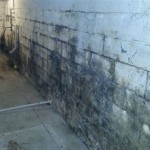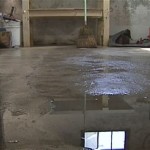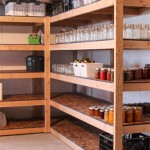Waterproof Your Basement From Inside: A Comprehensive Guide
A damp or flooded basement can be a major inconvenience and a potential health hazard. If you're facing this issue, waterproofing your basement from the inside can be an effective solution. Here are the essential aspects to consider for a successful waterproofing project:
Identifying the Source of Water
The first step is to determine the source of water leakage. Inspect the foundation walls, floor, and ceiling for cracks, holes, or gaps. Check for any signs of water seepage, efflorescence (white or crystalline deposits), or mold. Common sources of water intrusion include:
- Foundation cracks
- Missing or damaged foundation drain tile
- Leaking underground pipes
- High water table
Selecting the Right Waterproofing Method
Once you have identified the source of water, you can choose the appropriate waterproofing method. Common options include:
- Interior sealing: This involves applying a sealant or membrane to the inside of the basement walls or floor to block water penetration.
- French drains: These are underground drains installed around the foundation to collect and redirect water away from the structure.
- Sump pumps: These are pumps that collect water from a sump basin in the basement and pump it out.
- Vapor barriers: These are sheets of polyethylene or other materials installed on the basement walls or floor to prevent moisture from entering.
Preparing the Basement
Before applying any waterproofing solution, it's essential to prepare the basement. This includes:
- Cleaning the basement walls, floor, and ceiling to remove dirt, dust, and other debris.
- Repairing any cracks or holes in the foundation or walls.
- Installing a dehumidifier to reduce moisture in the air.
Installing the Waterproofing System
Once the basement is prepared, you can install the chosen waterproofing system. Follow the manufacturer's instructions carefully and ensure all components are properly sealed and secured.
Testing and Maintenance
After installation, test the waterproofing system by introducing water to the foundation or floor. If there are no leaks, the system is effective. Regular maintenance, such as cleaning drains and inspecting for damage, is crucial to ensure the system's longevity.
Benefits of Interior Waterproofing
Waterproofing your basement from the inside offers several benefits:
- Prevents water damage to the basement structure, furnishings, and personal belongings.
- Improves indoor air quality by reducing moisture and mold.
- Increases the value and livability of your home.
- Provides peace of mind knowing your basement is protected from water intrusion.
By carefully considering the essential aspects outlined in this guide, you can effectively waterproof your basement from the inside and enjoy a dry and healthy living space.

Interior Basement Waterproofing Internal Solution Rcc Toronto Wet

Waterproofing Basement Walls From Inside Only Is Usually Not Enough Nashville Foundation Repair Specialists

The 3 Major Approaches To Basement Waterproofing News And Events For Systems Inc

Waterproofing A Basement From The Inside Can Be Challenge Fine Homebuilding

Best Way To Waterproof Your Basement Dry Pro

How To Waterproof Basement Walls From Inside Sani Tred

How Does Interior Basement Waterproofing Work

How Does Interior Basement Waterproofing Work

Interior Basement Waterproofing Internal Solution Rcc Toronto Wet

Interior Basement Waterproofing System In Milwaee Wi
See Also








